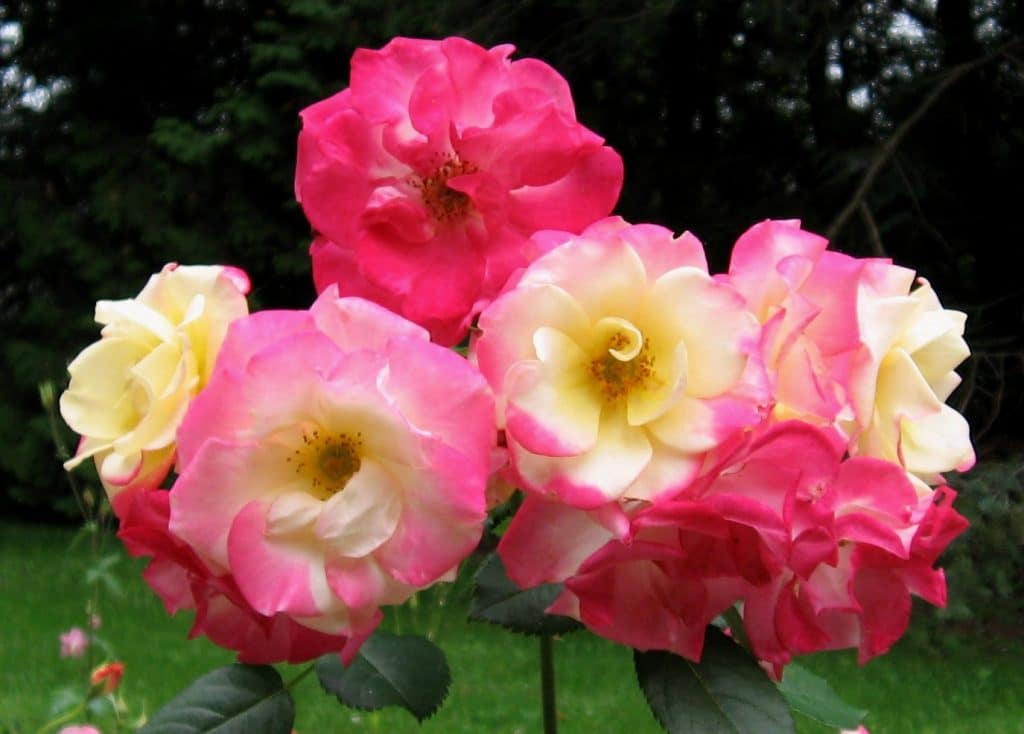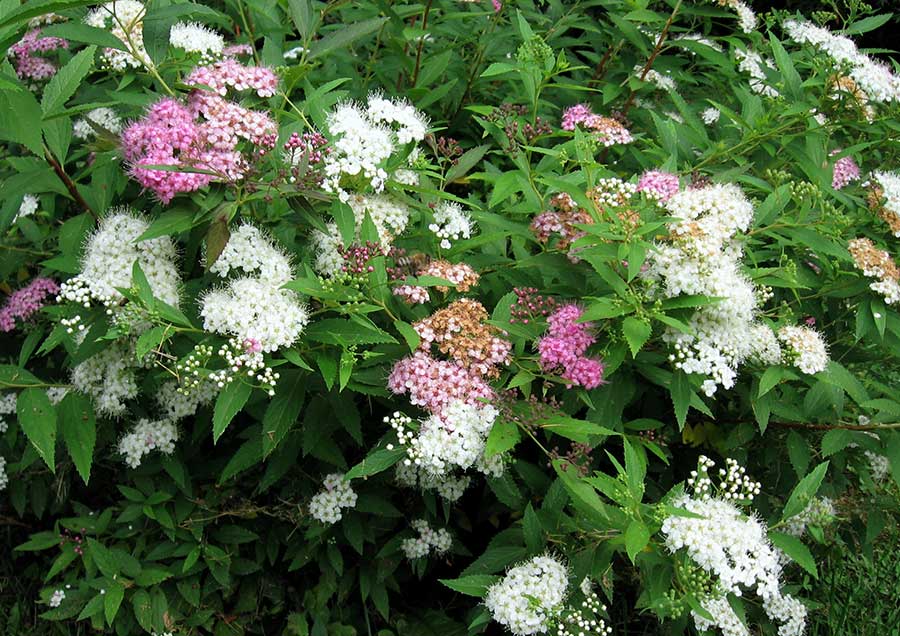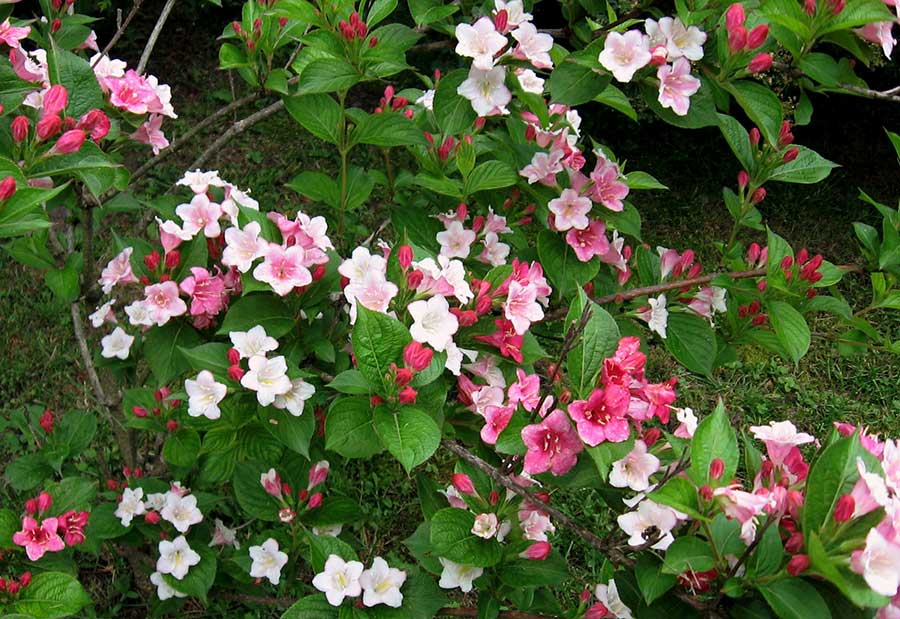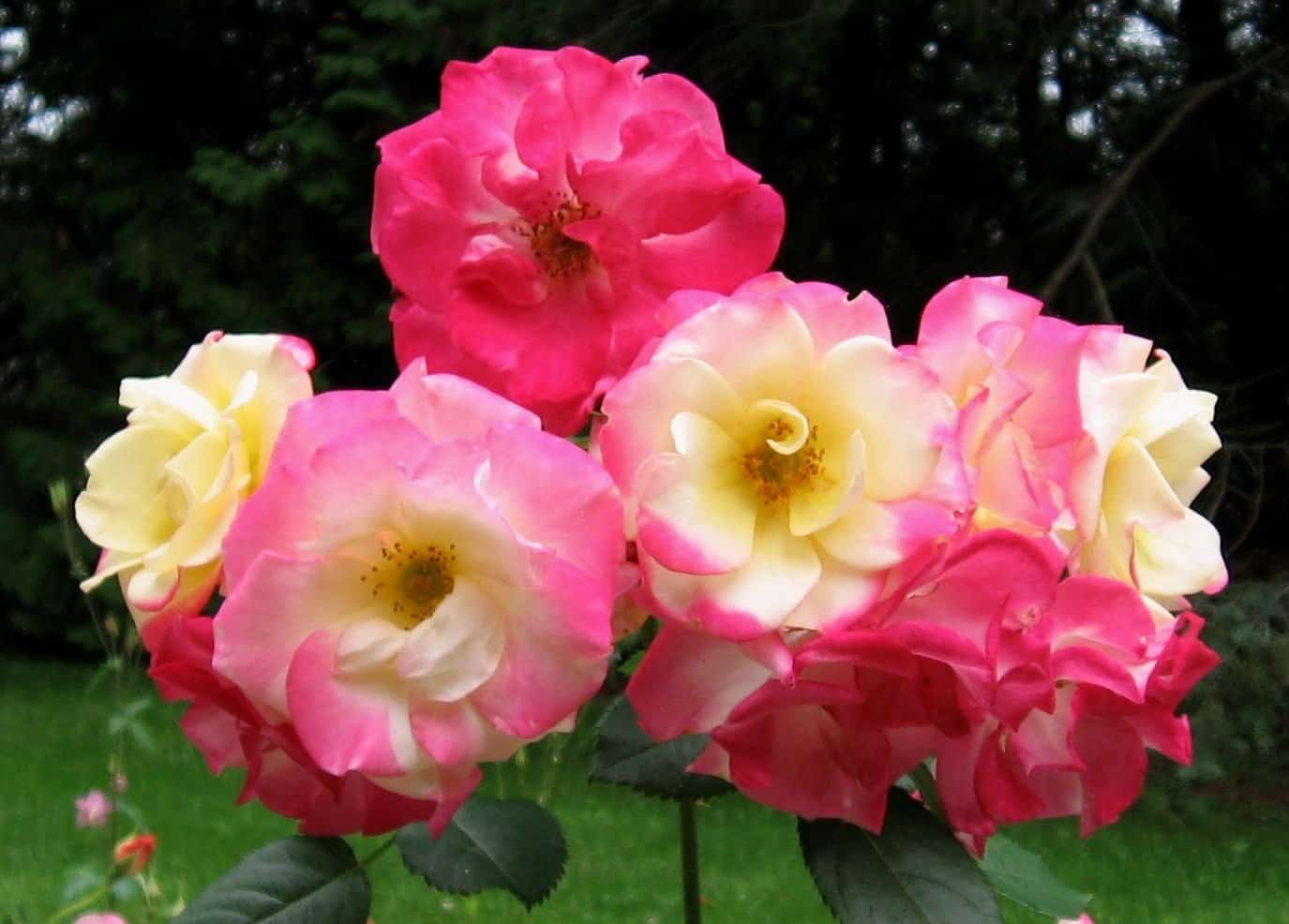I love a good party plant, and with Canada Day fast approaching, I’ve been thinking about the flowering plants I grow that simultaneously bear blooms of three different colours. Some gardeners may think that tricoloured plants are a little over the top, but that’s what makes these varieties so festive.
My Campfire roses bear yellow, pink and deep rose-coloured petals that morph as the flowers age, and are influenced by fluctuations in temperature and light levels. On the other hand, my ‘Genpei’ Japanese spirea and Carnaval weigela bear separate white, pink and rose-red blooms at the same time, on the same branch. Triple the fun, I often think.

Campfire rose (Rosa [Canadian Artists Series] ‘CA29’)
Technically a shrub rose and hardy to Zone 3, Campfire grows 30 inches (75 cm) tall and wide. Like all the cultivars in the Canadian Artists series, it was bred for flower colour, hardiness and disease resistance, and is only lightly fragrant.
Campfire bears clusters of three-inch (7.5-cm)-wide flowers with 20 petals that open yellow and develop pink edges that gradually spread and turn rose-red before they drop. Predominantly yellow early in the season, flushes of pink and rose-red become more prominent as the summer progresses. Once Campfire begins to bloom, it’s never without flowers until the hard frosts of autumn finally extinguish its warm glow.
Introduced in 2013, Campfire is the result of a cross between the Easy Elegance series rose My Hero (R. ‘BAIhero’, 2001) and the Canadian Explorer series rose ‘Frontenac’ (1992). The original cross was made in 2001 at the old Morden Research Station in Manitoba, and when the Harper government closed the facility in 2010, the newly formed Canadian Artists Rose Consortium rescued the germplasm.
Named after the Tom Thomson (1877-1917) painting of the same name, the original Campfire (1916) is oil on wood, and hangs in Ottawa’s National Art Gallery of Canada.

‘Genpei’ Japanese spirea (Spiraea japonica ‘Genpei’ syn. ‘Shirobana’)
As the name suggests, Japanese spireas are native to Japan, but they’re also indigenous to Korea and China. They have a mounded, multi-stemmed habit and bear clusters (corymbs) of flowers in summer after most other shrubs have finished blooming. In their native habitat they grow in rich, moist soil along the edges of streams and at forest margins. The first Japanese spirea to reach the West was S. j. ‘Fortunei’, which was sent from China to England in 1849 by intrepid Scottish plant hunter Robert Fortune (1812-80).
Japanese spireas bloom on new wood, so they should be pruned in late winter or early spring, and cuts should be confined to removing dead wood and enhancing the their natural gentle, rounded habit. Japanese spireas are deer resistant and attract bees and butterflies, and as woody plant expert Michael Dirr writes, “Based on my experience it is difficult to kill a spirea.”
‘Genpei’ is unique among Japanese spireas for producing white, pink and rose-red flowers on the same plant at the the same time. This is not a case of white flowers aging to pink (as with Hydrangea paniculata cultivars); instead, the buds of each corymb are distinctly different colours even before they open. Semi-dwarf ‘Genpei’ was introduced in Japan in 1970, and grows 24 inches (60 cm) tall by 30 inches (75 cm) wide; after its first flush of flowers it continues to bloom sporadically throughout the summer. A multicoloured classic, ‘Genpei’ is hardy to Zone 4.

Carnaval weigela (Weigela florida ‘Courtalor’)
Carnaval seems a perfect name for this jolly, tricoloured weigela. It bears large white, pink and rose-red azalea-shaped flowers on the same branch — sometimes the same flower cluster — in early summer, with sporadic re-bloom until autumn. Recently hybridized by plant breeders in Angers (France), Carnaval is a rare triploid (with three sets of chromosomes instead of the usual two) that produces large numbers of sterile, weather-resistant flowers that are much loved by my local hummingbirds.
Although my sun-loving, Zone 5 Carnaval is only a couple of years old (and living on the edge of its hardiness zone), mature specimens can grow up to four feet (1.2 m) tall and wide. Gardeners in colder regions should look for Dance series weigela cultivars (Zone 3) that were bred in Ottawa in the 1980s by Félicitas Svejda (1920-2016), famous for her Canadian Explorer series roses.
As with Japanese spireas, we have Robert Fortune to thank for the introduction of weigelas to the West. Fortune first spotted Weigela florida growing in the garden of a mandarin at Zhoushan, and wrote that “Everyone saw and admired the beautiful [weigela], which was a great favourite with the old gentleman to whom the place belonged.” Fortune duly purchased specimens at a Shanghai nursery and shipped them back to England in Wardian cases (similar to terrariums) in 1845.
My Carnaval weigela has already dropped its first set of flowers, and it will be couple of weeks before fresh new buds open. And my ‘Genpei’ spirea won’t begin to bloom until the middle of July. But for Canada Day itself, I know I can look forward to bucket loads of Campfire roses for a once-in-a-lifetime multicoloured sesquicentennial celebration.
Share your comments
What’s your favourite party plant?



Where can I buy bulbs ,this fall, specially ere,urus, in white yello and peach?
And the Campfire rose please?
Thanks